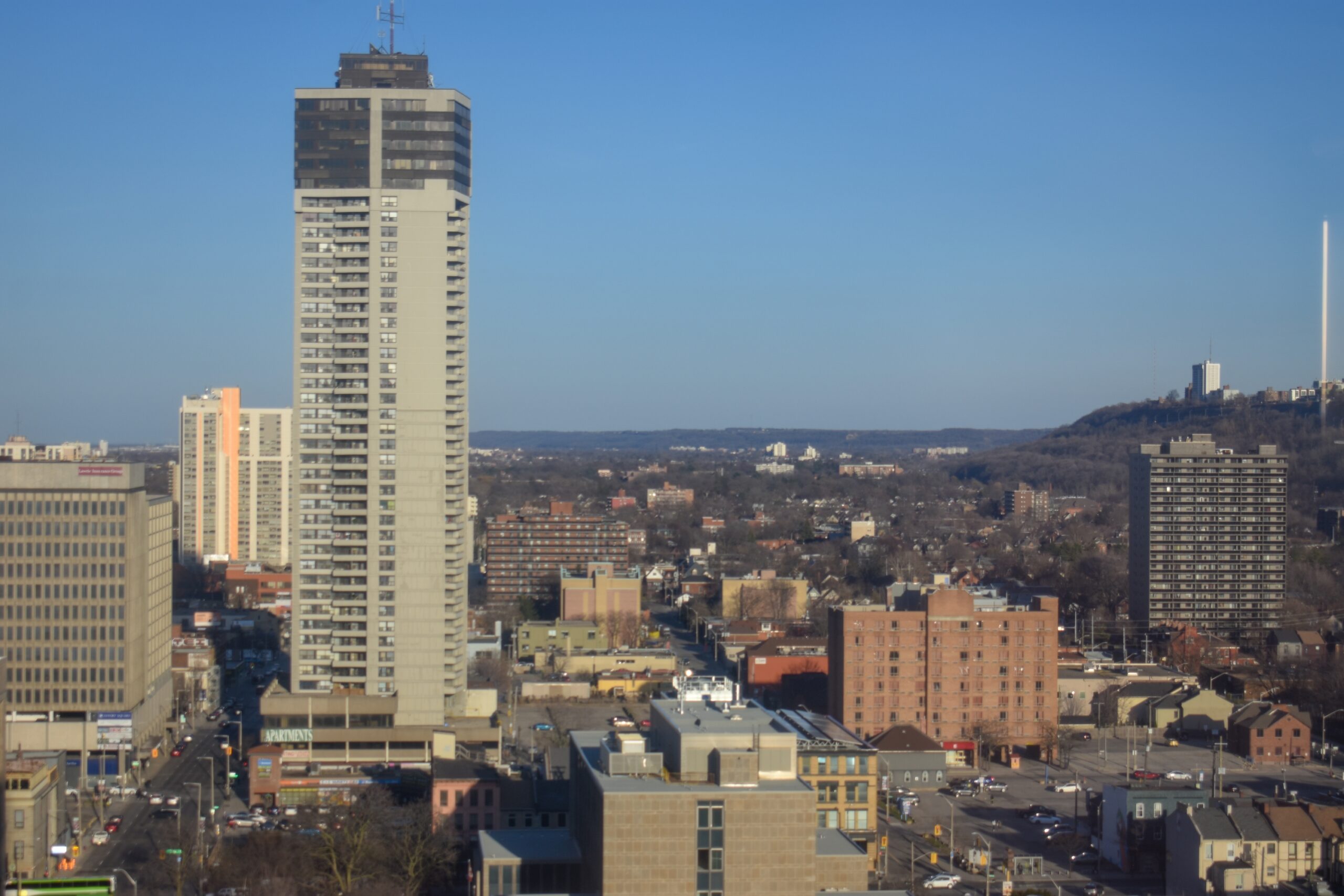Ontario’s municipalities are trying to tackle climate change within the limitations of their powers as set by the Province of Ontario.
Ontario’s Building Code sets the minimum standards for construction in Ontario and municipalities cannot impose building standards which are more stringent than these minimums set by Code.
But can municipalities use their Planning Act zoning powers to create environmental design standards, such as requiring rough-ins for future vehicle charging stations or district energy?
Already, municipalities have an array requirements related to materials, height, setbacks, landscaping, and design included in their zoning bylaws. Would adding environmental standards being much different?
Hamilton, and other municipalities, are conducting environmental reviews as part of zoning bylaw reviews.
On Monday, consultants from WSP shared a high-level overview of their ongoing review of green standards which will be presented to Hamilton City Council this fall and potentially added to future zoning bylaws and secondary plans.
Among the ideas being considered is requiring new buildings to include cool roofs to decrease the urban heat island effect, rough-ins for electric vehicle charging ports, mandating use of native plant species, mandatory bird friendly design, improved water efficiency indoors and outdoors, and the ability to adapt to district energy in the future.
Setting higher environmental standards is key to achieving Hamilton’s climate change mitigation goals, the consultants said.
Hamilton’s present tree canopy coverage is 21.2 percent with a stated goal of having a tree canopy which covers 30 percent of the urban area. This is difficult to achieve in the short-term, it takes decades for trees to grow to a sufficient size to provide significant coverage.
The City many considering implementing higher standards for the number of trees required in new sub-divisions to advance this goal.
The review will also look at life cycle costs such as waste generated when roofs need replacing or a house is demolished decades in the future. The standards may include material requirements to decrease these types of future waste.
It is premature to adopt Net-Zero as the default standard, the consultants state. They state more planning and the maturing of technologies is needed first.
Joanne Hickey-Evans, the City of Hamilton’s Manager of Policy Planning and Zoning By-law Reform, says the City is looking at district energy plans and will eventually seek to have district energy in new sub-divisions to improve energy efficiency.
Hamilton is already looking at implementing district energy in parts of the downtown where numerous tall buildings are being proposed.
Hickey-Evans states developers should be prepared for district energy to be required in growth areas as new secondary plans are created.
West End Home Builders’ Association CEO Michael Collins-Williams says the development industry “supports green standards” but the industry is concerned “there will be 400-plus different standards” in Ontario if every municipality has different rules.
He emphasized repeatedly the industry is not opposed to improved standards but “there are components of this which merit conversation and consultation” before going to Council.
The consultants will return to a future meeting of the Development Industry Liaison Group for further discussions as they advance further in their project.

